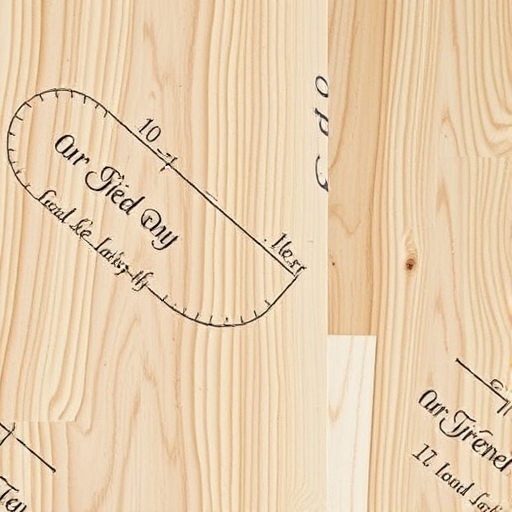Can You Paint Particle Board? A Comprehensive Guide
Particle board, also known as chipboard, is a widely used material in furniture and cabinetry due to its affordability and versatility. However, many people wonder if they can paint particle board to enhance its appearance or protect it from wear and tear. In this article, we will explore the ins and outs of painting particle board, including the best practices, challenges, and tips for achieving a professional finish.
What is Particle Board?
Particle board is an engineered wood product made from wood chips, sawmill shavings, and sawdust, which are bonded together with a resin or adhesive under heat and pressure. It is commonly used in the manufacturing of furniture, cabinetry, and flooring due to its cost-effectiveness and ease of use.
Characteristics of Particle Board
- Affordability: Particle board is cheaper than solid wood and plywood, making it a popular choice for budget-conscious consumers.
- Versatility: It can be easily cut, shaped, and laminated, allowing for a variety of applications.
- Lightweight: Compared to solid wood, particle board is lighter, making it easier to handle and transport.
- Aesthetic Improvement: A fresh coat of paint can drastically change the look of furniture or cabinetry, making it more appealing.
- Protection: Paint can protect the surface from scratches, stains, and moisture, extending the life of the particle board.
- Customization: Painting allows for personalization, enabling you to match colors with your interior design.
- Porosity: Particle board is highly porous, which can lead to uneven paint absorption.
- Moisture Sensitivity: Particle board can swell or warp when exposed to moisture, so it’s essential to use the right paint and sealant.
- Surface Finish: Achieving a smooth finish can be difficult without proper preparation.
- Use a damp cloth or sponge.
- Allow the surface to dry completely.
- Use fine-grit sandpaper (around 220 grit).
- Sand in the direction of the grain to avoid scratching the surface.
- Benefits of Priming:
- Seals the porous surface.
- Provides better adhesion for the paint.
- Prevents the paint from soaking into the board.
- Shellac-based primers
- Oil-based primers
- Water-based primers
- Acrylic Latex Paint: Good for indoor furniture; dries quickly and is easy to clean.
- Oil-based Paint: Offers a durable finish but takes longer to dry and requires solvents for cleanup.
- Chalk Paint: Provides a matte finish and is ideal for a vintage look.
- Use a high-quality paintbrush or foam roller for application.
- Apply multiple thin coats rather than one thick coat to avoid drips and unevenness.
- Allow sufficient drying time between coats.
- Types of Sealants:
- Polyurethane (oil-based or water-based)
- Varnish
- Lacquer
- Work in a Well-Ventilated Area: Ensure proper airflow to avoid inhaling fumes.
- Use Drop Cloths: Protect your workspace from paint spills.
- Take Your Time: Rushing the process can lead to mistakes.
- Test on a Small Area: Always test the paint on a small, inconspicuous area to ensure compatibility.
Why Paint Particle Board?
Painting particle board can serve multiple purposes:
Challenges of Painting Particle Board
While painting particle board can yield beautiful results, there are challenges that you may encounter:
How to Prepare Particle Board for Painting
Preparation is key to ensuring a successful paint job on particle board. Here’s a step-by-step guide:
Step 1: Clean the Surface
Before painting, clean the surface to remove dust, grease, and any other contaminants.
Step 2: Sand the Surface
Lightly sand the particle board to create a rough surface for the paint to adhere to.
Step 3: Apply a Primer
Using a primer specifically designed for particle board or laminate surfaces is crucial.
Recommended Primers
Step 4: Choose the Right Paint
Selecting the right type of paint is essential for achieving a durable finish.
Types of Paint Suitable for Particle Board
Step 5: Painting
Once the primer has dried, it’s time to paint.
Step 6: Seal the Paint
To protect your painted particle board, apply a clear sealant.
Tips for Achieving a Professional Finish
Comparison Table: Types of Paint for Particle Board
| Type of Paint | Durability | Drying Time | Cleanup | Finish |
|---|---|---|---|---|
| Acrylic Latex Paint | Moderate | Fast | Water | Satin/Gloss |
| Oil-based Paint | High | Slow | Solvents | Glossy |
| Chalk Paint | Moderate | Fast | Water | Matte |
Frequently Asked Questions (FAQ)
Can you paint particle board without sanding?
While it is possible to paint without sanding, it is not recommended. Sanding helps the paint adhere better, leading to a more durable finish.
How long does painted particle board last?
With proper preparation and sealing, painted particle board can last several years. However, it is essential to avoid excessive moisture exposure to prevent damage.
Is it necessary to use a primer?
Yes, using a primer is highly recommended when painting particle board to ensure better adhesion and a smoother finish.
Can I use spray paint on particle board?
Yes, spray paint can be used on particle board, but it may require more careful application to avoid drips and uneven coverage.
What should I do if the paint chips?
If the paint chips, sand the area lightly, apply a primer, and repaint that section to restore the finish.
Conclusion
Painting particle board can be a rewarding DIY project that enhances both the appearance and durability of your furniture or cabinetry. By following the proper preparation steps, selecting the right materials, and applying the paint carefully, you can achieve a professional-looking finish that revitalizes your space. Whether you’re looking to update old furniture or personalize a new piece, painting particle board is a cost-effective solution that can bring your design vision to life.

